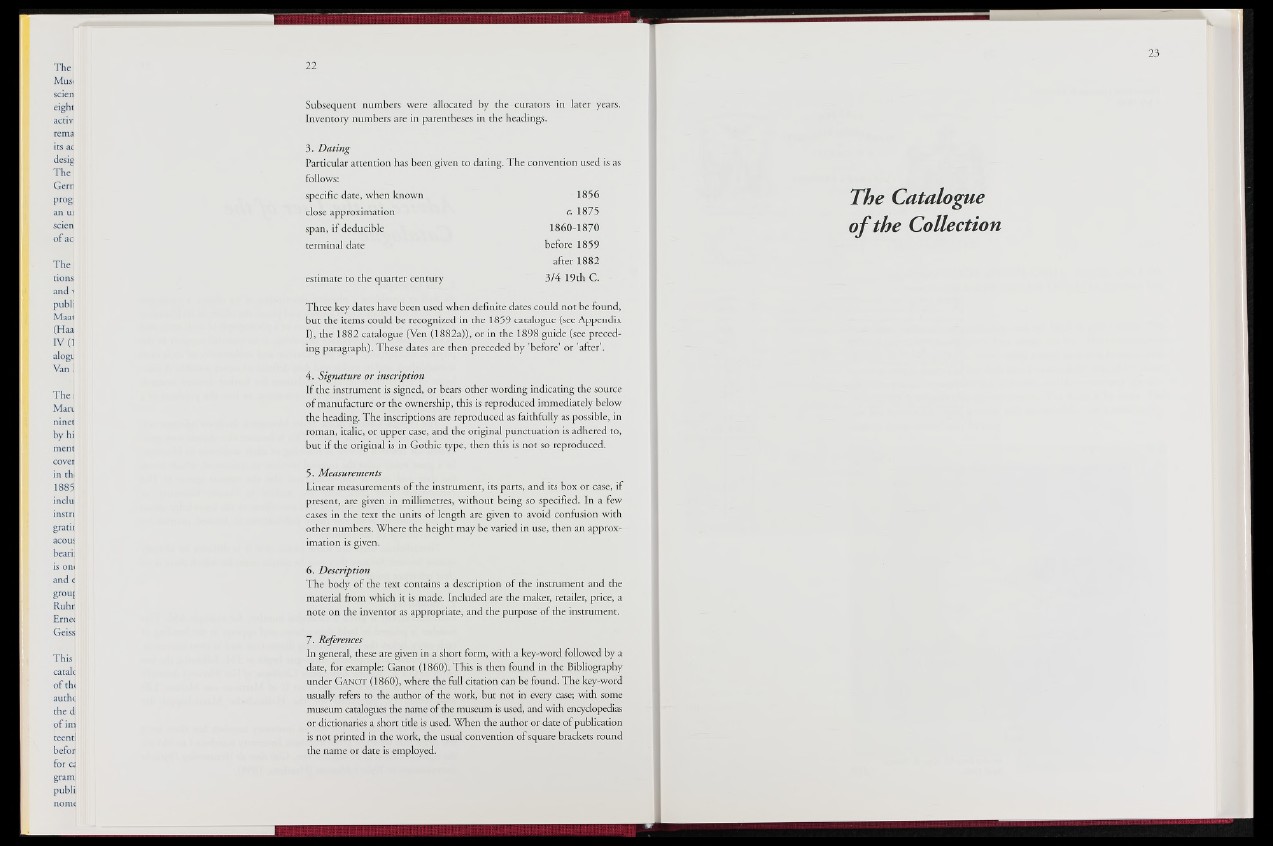
The 22
Musi
seien
eight Subsequent numbers were allocated by the curators in later years.
activ Inventory numbers are in parentheses in the headings.
rema
its ac 3 . Dating
des,8 Partícula r attention has been given to dating. The convention used is as
T}it follows:
Gem
prog:
an u]
seien
of ac
specific date, when known 1856
close approximation c. 1875
span, if deducible 1860-1870
terminal date before 1859
'Phe 1882
tions estimate to the quarter century 3/4 19th C.
and i
publi Three key dates have been used when definite dates could not be found,
Maat but the items could be recognized in the 1859 catalogue (see Appendix
I), the 1882 catalogue (Ven (1882a)), or in the 1898 guide (see preced-
^ ing paragraph). These dates are then preceded by 'before' or 'after',
alogi
Van j I4 . Signature or i.n scri. pti.on
n™ If the instrument is signed, or bears other wording indicating the source
w of manufacture or the ownership, this is reproduced immediately below
njnet the heading. The inscriptions are reproduced as faithfully as possible, in
by bi roman, italic, or upper case, and the original punctuation is adhered to,
ment but if the original is in Gothic type, then this is not so reproduced,
cover
in tin 5. Measurements
1885 Linear measurements of the instrument, its parts, and its box or case, if
inclu present, are given in millimetres, without being so specified. In a few
instri cases in the text the units of length are given to avoid confusion with
gratil other numbers. Where the height may be varied in use, then an approxacoui
imation is given,
bearii
1S on‘ 6. Description
^ € The body of the text contains a description of the instrument and the
^r°iul material from which it is made. Included are the maker, retailer, price, a
U note on the inventor as appropriate, and the purpose of the instrument.
Geiss n
7. References
Ybjs In general, these are given in a short form, with a key-word followed by a
C2Xa\f date, for example: Ganot (1860). This is then found in the Bibliography
0f tj1( under G.ANOT (1860), where the full citation can be found. The key-word
autbc usually refers to the author of the work, but not in every case; with some
the d museum catalogues the name of the museum is used, and with encyclopedias
pf im or dictionaries a short tide is used. When the author or date of publication
teent] is not printed in the work, the usual convention of square brackets round
befor the name or date is employed,
for ca
gram:
publi
nomc
The Catalogue
o f the Collection